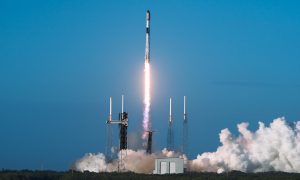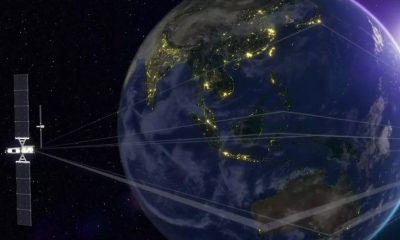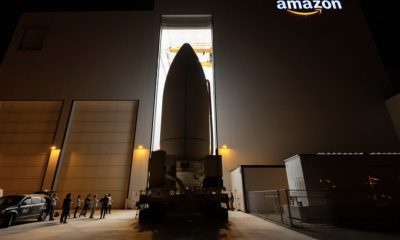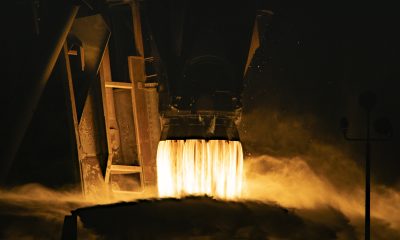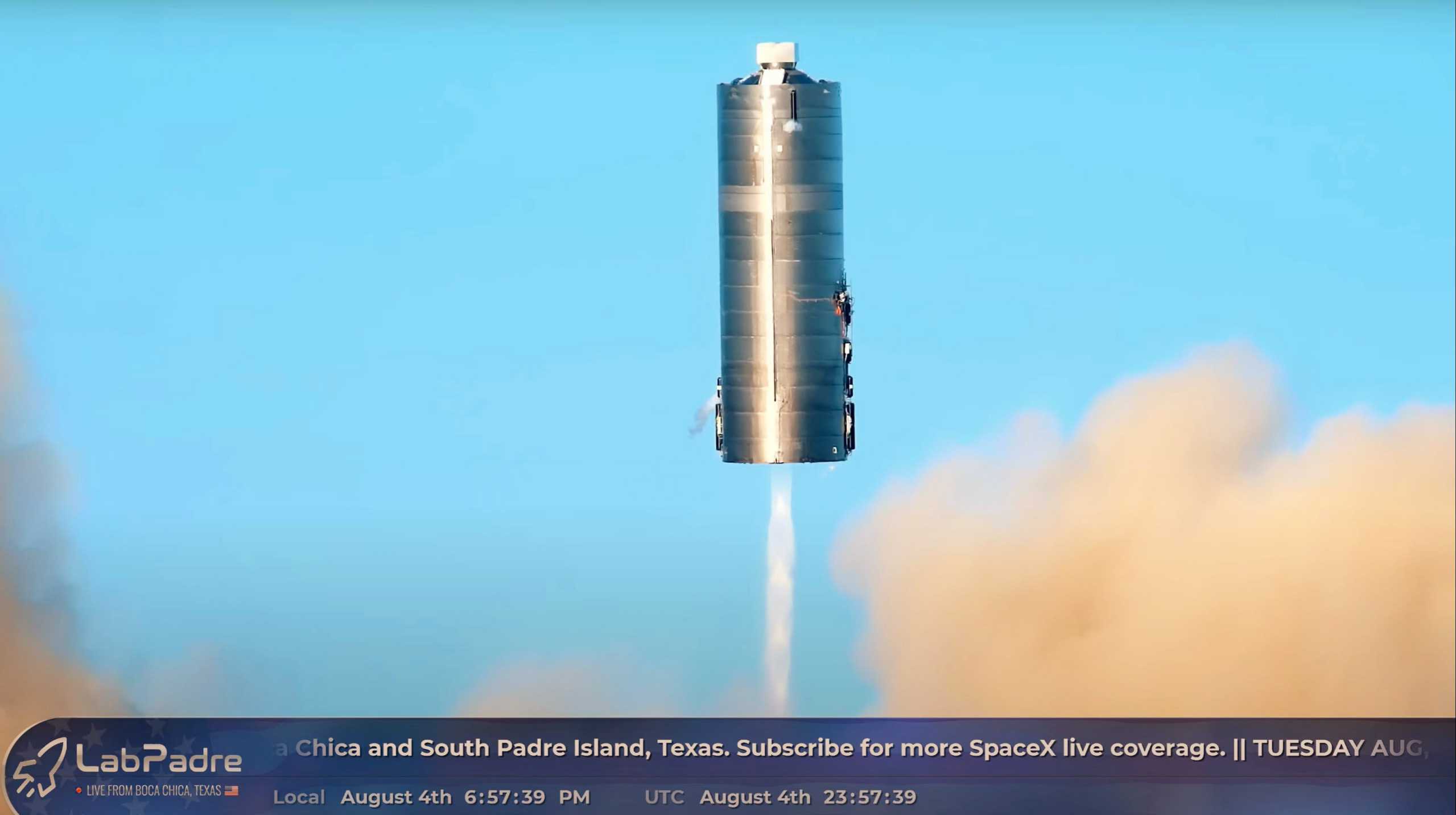

News
SpaceX Starship leaps towards Mars with picture-perfect hop debut
SpaceX’s Starship rocket has taken the biggest step towards orbit (and Mars) yet after a full-scale prototype successfully launched 150m (~500 ft) into the air and landed in one piece.
Anywhere from two to four years in the making, Starship SN5’s seemingly flawless hop debut saw the rocket carry forth a torch lit by Starhopper’s second and final flight last year. In August 2019, Starhopper completed its own 150m hop test, stunning many with the sheer oddity and unlikeliness of the achievement. Now, for the first time ever, a full-scale Starship – built with materials and methods that should translate almost 1:1 to orbital-class spaceships – has safely launched and landed.
Powered by the same methane and oxygen-fueled Raptor engine SpaceX intends to use to explore and inhabit Mars, Starship SN5’s hop debut was actually even smoother than Starhopper. Its predecessor suffered an extremely hard landing when its early Raptor engine lost power shortly before landing – a fate SN5 appears to have avoided with ease.
At this point, it’s a real possibility that SpaceX is now like the dog caught the bus – past a milestone it had not fully prepared to pass, in other words. Starship SN5’s apparent success means that SpaceX has now well and truly flight-proven the methods and materials it’s currently using to build next-generation steel rockets with. Of course, 150 meters is a drop in the bucket compared to Starship’s actual orbital destinations, but the ability to build a fully functional pressure vessel out of commodity steel and spartan facilities has always been the program’s biggest uncertainty.
With SN5 safely back on land, SpaceX can now immediately begin to work towards far more ambitious flight tests. The most notable of those tests will likely be a 20 km (~12 mi) launch followed by a bizarre skydiver-style landing attempt, second only – of course – to Starship’s first orbital launch and reentry attempts.
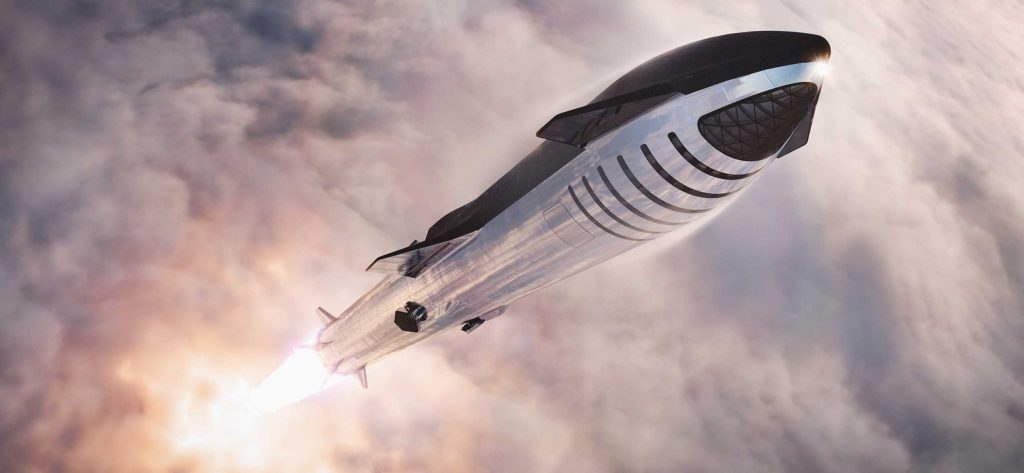
After weeks of attempts with SN5 alone and another seven months of work with prototypes SN1, SN3, SN4, and three smaller test tanks, Starship’s successful full-scale hop debut is simultaneously unsurprising and almost impossible to believe. Notable is the fact that even after today’s roaring success, SpaceX appears to be hard at work building a new Starship – SN8 – out of an entirely different steel alloy designed to make the rockets even sturdier than they already are.
According to NASASpaceflight.com, Starship SN8 will be the first full-scale prototype to have a functioning nose and aerodynamic control surfaces installed and will attempt the aforementioned 20 km “skydiver” recovery and landing test. SpaceX could begin stacking SN8’s components at any moment.
The fates of Starship SN5 – and outdated-alloy-sibling SN6 – is unclear but whatever they are, they are now all but guaranteed to follow on the heels of a highly successful career.
Check out Teslarati’s Marketplace! We offer Tesla accessories, including for the Tesla Cybertruck and Tesla Model 3.
Elon Musk
Elon Musk is now a remote DOGE worker: White House Chief of Staff
The Tesla and SpaceX CEO Elon Musk is no longer working from the West Wing.
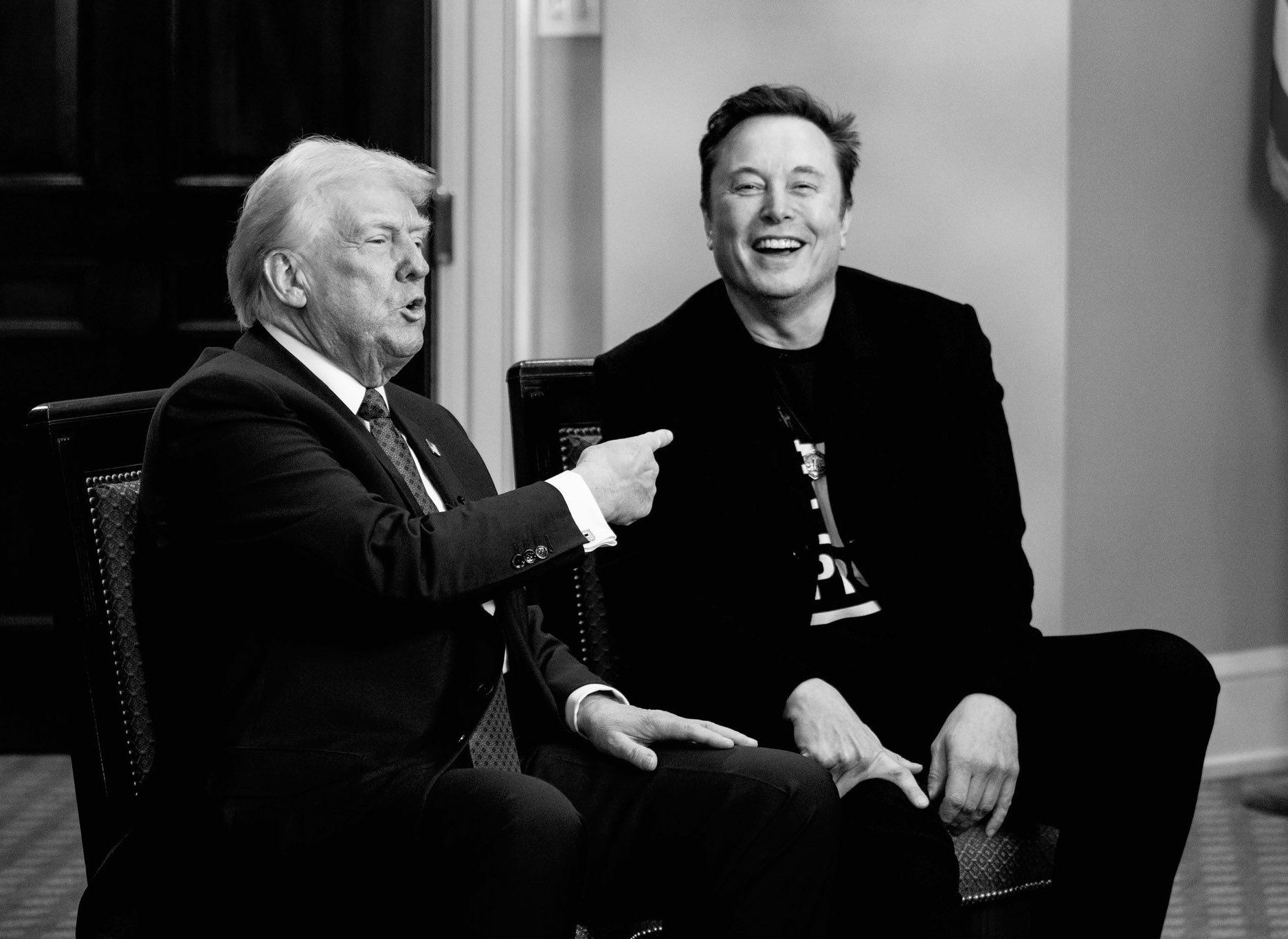
In a conversation with the New York Post, White House Chief of Staff Susie Wiles stated that Tesla and SpaceX CEO Elon Musk is no longer working from the West Wing.
As per the Chief of Staff, Musk is still working for DOGE—as a remote worker, at least.
Remote Musk
In her conversation with the publication, Wiles stated that she still talks with Musk. And while the CEO is now working remotely, his contributions still have the same net effect.
“Instead of meeting with him in person, I’m talking to him on the phone, but it’s the same net effect,” Wiles stated, adding that “it really doesn’t matter much” that the CEO “hasn’t been here physically.” She also noted that Musk’s team will not be leaving.
“He’s not out of it altogether. He’s just not physically present as much as he was. The people that are doing this work are here doing good things and paying attention to the details. He’ll be stepping back a little, but he’s certainly not abandoning it. And his people are definitely not,” Wiles stated.
Back to Tesla
Musk has been a frequent presence in the White House during the Trump administration’s first 100 days in office. But during the Q1 2025 Tesla earnings call, Musk stated that he would be spending substantially less time with DOGE and substantially more time with Tesla. Musk did emphasize, however, that DOGE’s work is extremely valuable and critical.
“I think I’ll continue to spend a day or two per week on government matters for as long as the President would like me to do so and as long as it is useful. But starting next month, I’ll be allocating probably more of my time to Tesla and now that the major work of establishing the Department of Government Efficiency is done,” Musk stated.
Elon Musk
Tariff reprieve might be ‘Tesla-friendly,’ but it’s also an encouragement to others
Tesla stands to benefit from the tariff reprieve, but it has some work cut out for it as well.
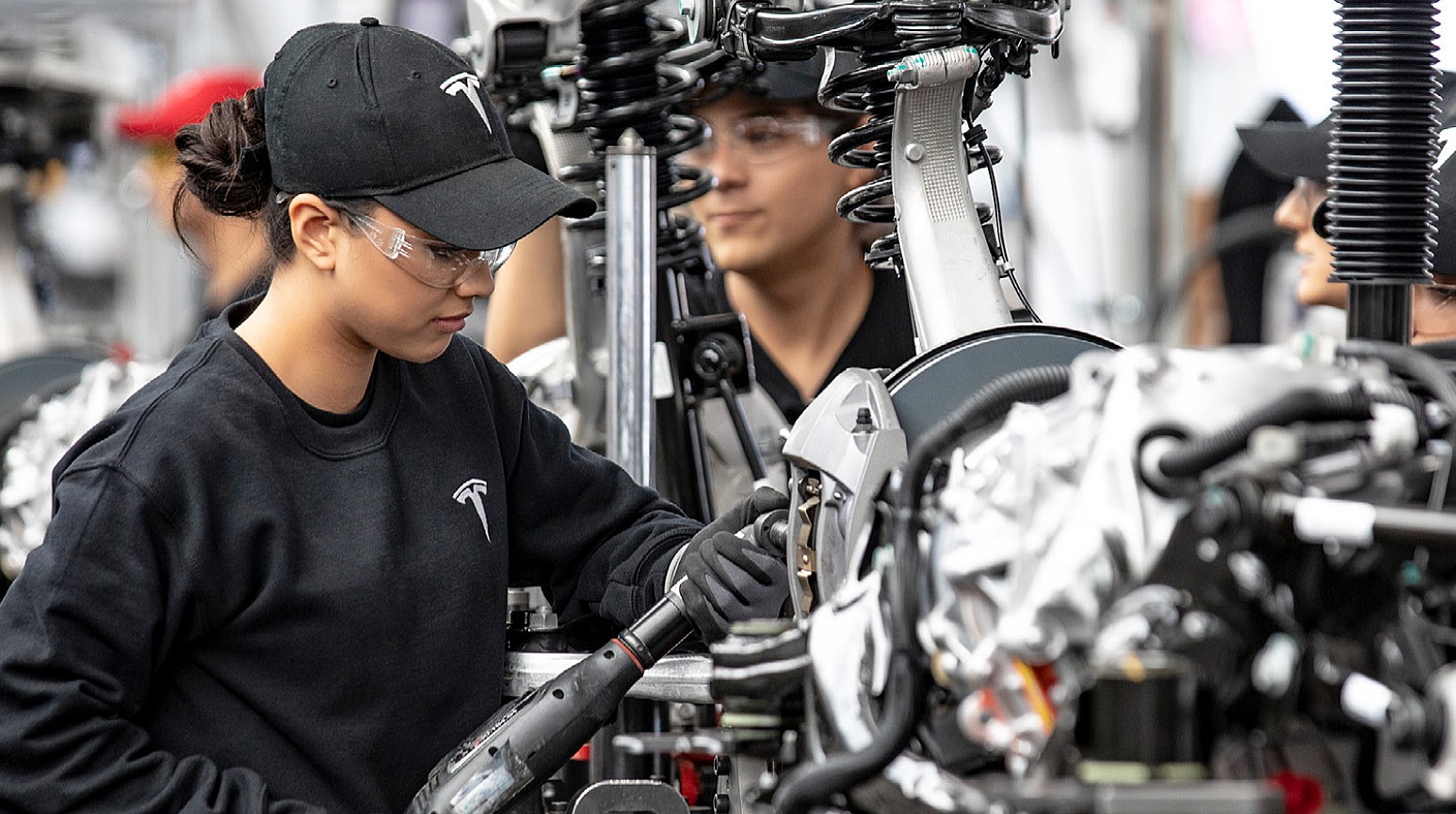
After Secretary of Commerce Howard Lutnick made adjustments to the automotive tariff program that was initially announced, many quickly pointed to the reprieve as “Tesla-friendly.”
While that may be the case right now, it was also a nudge of encouragement to other companies, Tesla included, to source parts from the U.S. in an effort to strengthen domestic manufacturing. Many companies are close, and it will only take a handful of improvements to save themselves from tariffs on their cars as well.
Yesterday, Sec. Lutnick confirmed that cars manufactured with at least 85 percent of domestic content will face zero tariffs. Additionally, U.S. automakers would receive credit up to 15 percent of the value of vehicles to offset the cost of imported parts.
Big Tesla win? Sec Lutnick says cars with 85% domestic content will face zero tariffs
“This is ‘finish your cars in America and you win’,” Lutnick said.
Many were quick to point out that only three vehicles currently qualify for this zero-tariff threshold: all three are Teslas.
However, according to Kelley Blue Book’s most recent study that revealed who makes the most American cars, there are a lot of vehicles that are extremely close to also qualifying for these tariff reductions.
Tesla has three vehicles that are within five percent, while Ford, Honda, Jeep, Chevrolet, GMC, and Volkswagen have many within just ten percent of the threshold.
Tesla completely dominates Kogod School’s 2024 Made in America Auto Index
It is within reach for many.
Right now, it is easy to see why some people might think this is a benefit for Tesla and Tesla only.
But it’s not, because Tesla has its Cybertruck, Model S, and Model X just a few percentage points outside of that 85 percent cutoff. They, too, will feel the effects of the broader strategy that the Trump administration is using to prioritize domestic manufacturing and employment. More building in America means more jobs for Americans.
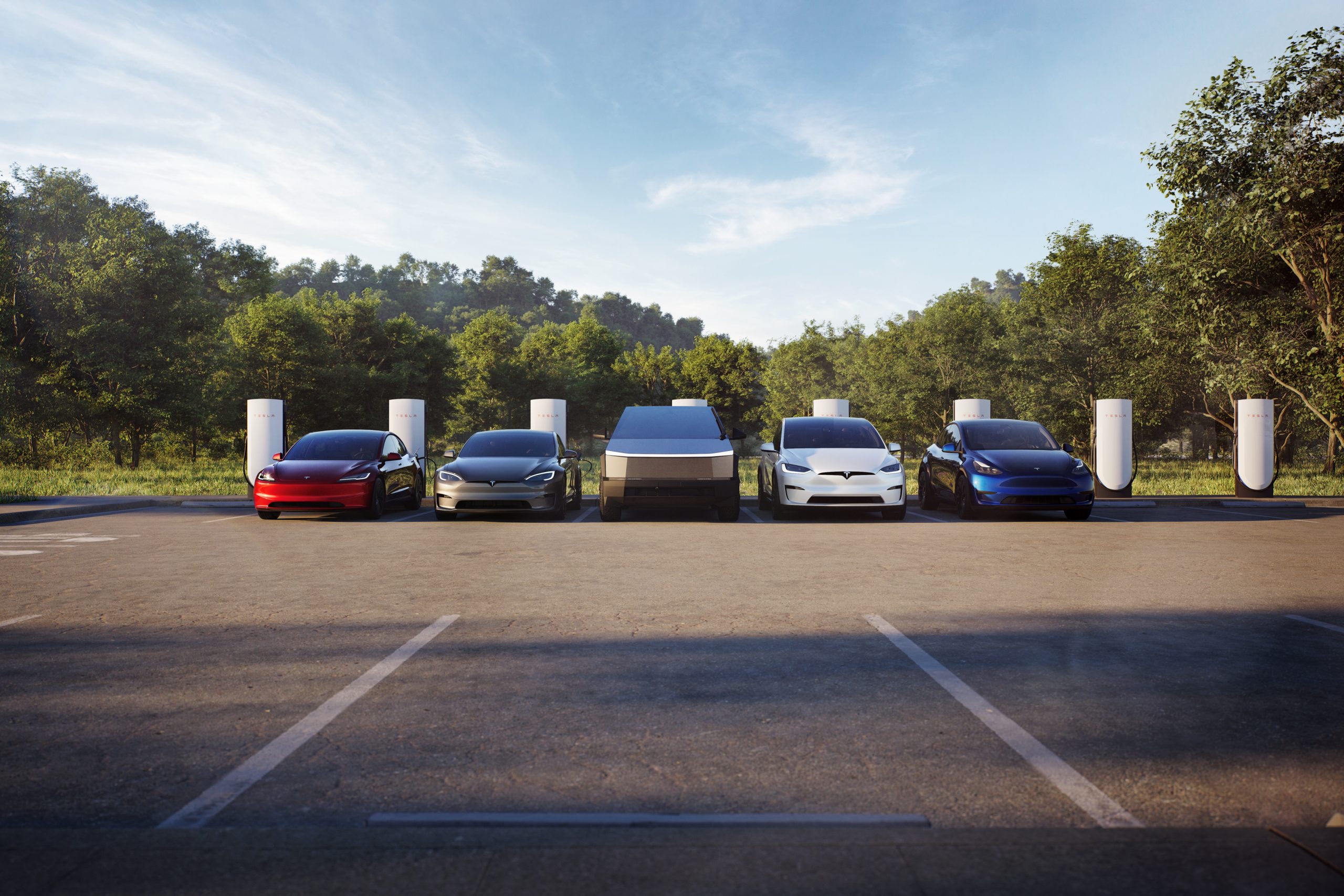
Credit: Tesla
However, other companies that are very close to the 85 percent cutoff are only a few components away from also saving themselves the hassle of the tariffs.
Ford has the following vehicles within just five percent of the 85 percent threshold:
- Ford Mustang GT automatic (80%)
- Ford Mustang GT 5.0 (80%)
- Ford Mustang GT Coupe Premium (80%)
Honda has several within ten percent:
- Honda Passport All-Wheel-Drive (76.5%)
- Honda Passport Trailsport (76.5)
Jeep has two cars:
- Jeep Wrangler Rubicon (76%)
- Jeep Wrangler Sahara (76%)
Volkswagen has one with the ID.4 AWD 82-kWh (75.5%). GMC has two at 75.5% with the Canyon AT4 Crew Cab 4WD and the Canyon Denali Crew Cab 4WD.
Chevrolet has several:
- Chevrolet Colorado 2.7-liter (75.5%)
- Chevrolet Colorado LT Crew Cab 2WD 2.7-liter (75.5%)
- Chevrolet Colorado Z71 Crew Cab 4WD 2.7-liter (75.5%)
These companies are close to reaching the 85% threshold, but adjustments need to be made to work toward that number.
Anything from seats to fabric to glass can be swapped out for American-made products, making these cars more domestically sourced and thus qualifying them for the zero-tariff boundary.
Frank DuBois of American University said that manufacturers like to see stability in their relationships with suppliers and major trade partners. He said that Trump’s tariff plan could cause “a period of real instability,” but it will only be temporary.
Now is the time to push American manufacturing forward, solidifying a future with more U.S.-made vehicles and creating more domestic jobs. Tesla will also need to scramble to make adjustments to its vehicles that are below 85%.
News
Tesla Cybertruck RWD production in full swing at Giga Texas
Videos of several freshly produced Cybertruck LR RWD units were shared on social media platform X.
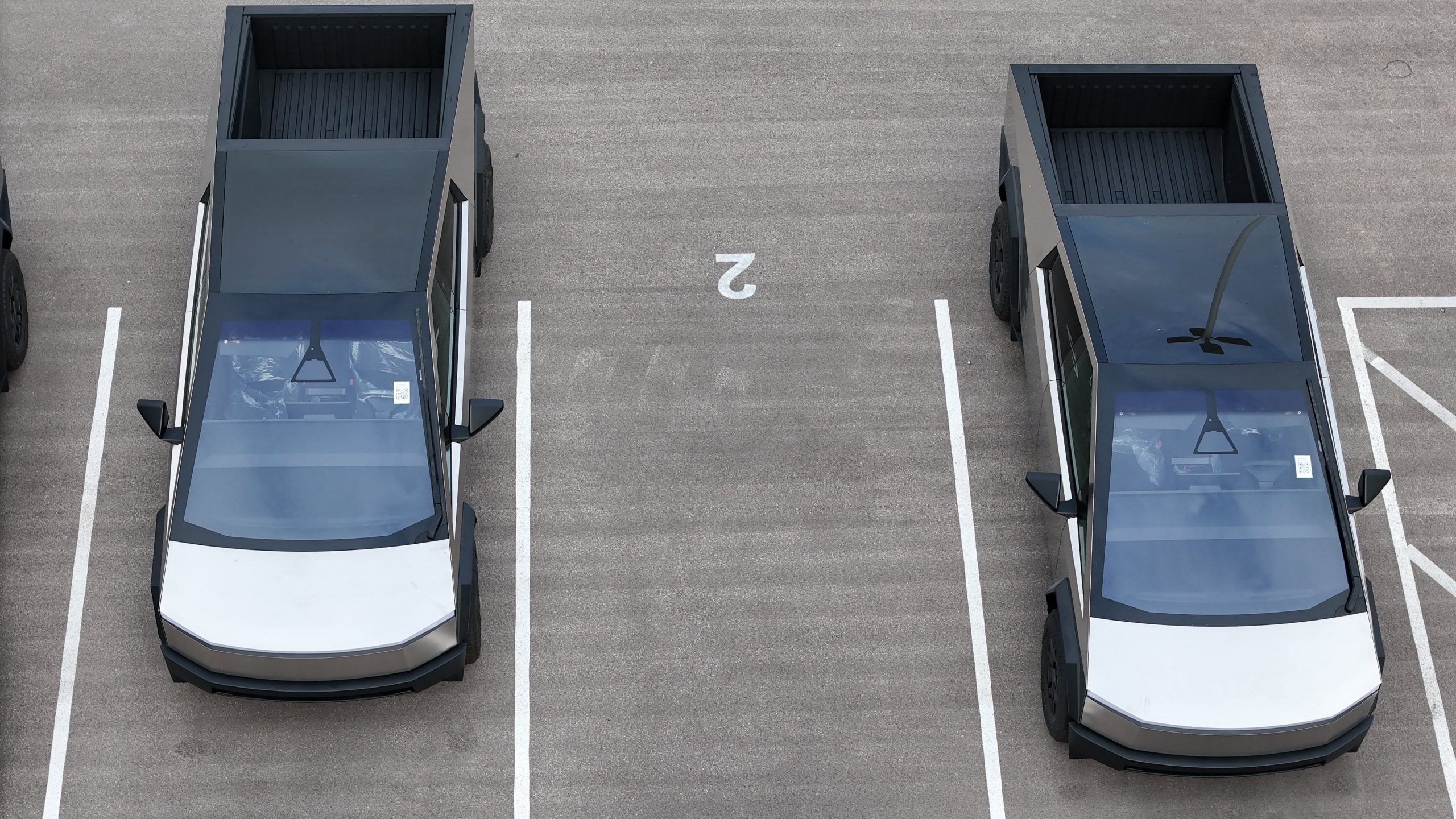
It appears that Tesla is indeed ramping the production of the Cybertruck Long Range Rear Wheel Drive (LR RWD), the most affordable variant of the brutalist all-electric pickup truck.
Videos of several freshly produced Cybertruck LR RWD units were shared on social media platform X.
Giga Texas Footage
As per longtime Tesla watcher Joe Tegtmeyer, Giga, Texas, was a hotbed of activity when he conducted his recent drone flyover. Apart from what seemed to be Cybercab castings being gathered in the complex, a good number of Cybertruck LR RWD units could also be seen in the facility’s staging area. The Cybertruck LR RWD units are quite easy to spot since they are not equipped with the motorized tonneau cover that is standard on the Cybertruck AWD and Cyberbeast.
The presence of the Cybertruck LR RWD units in Giga Texas’ staging area suggests that Tesla is ramping the production of the base all-electric pickup truck. This bodes well for the vehicle, which is still premium priced despite missing a good number of features that are standard in the Cybertruck AWD and Cyberbeast.
Cybertruck Long Range RWD Specs
The Cybertruck LR RWD is priced at $69,990 before incentives, making it $10,000 more affordable than the Cybertruck AWD. For its price, the Cybertruck Long Range RWD offers a range of 350 miles per charge if equipped with its 18” standard Wheels. It can also add up to 147 miles of range in 15 minutes using a Tesla Supercharger.
Much of the cost-cutting measures taken by Tesla are evident in the cabin of the Cybertruck LR RWD. This could be seen in its textile seats, standard console, seven-speaker audio system with no active noise cancellation, and lack of a 9.4” second-row display. It is also missing the motorized tonneau cover, the 2x 120V and 1x 240V power outlets on the bed, and the 2x 120V power outlets in the cabin. It is also equipped with an adaptive coil spring suspension instead of the adaptive air suspension in the Cybertruck AWD and Cyberbeast.
-

 News1 week ago
News1 week agoTesla’s Hollywood Diner is finally getting close to opening
-

 Elon Musk2 weeks ago
Elon Musk2 weeks agoTesla doubles down on Robotaxi launch date, putting a big bet on its timeline
-

 News5 days ago
News5 days agoTesla is trying to make a statement with its Q2 delivery numbers
-

 Investor's Corner1 week ago
Investor's Corner1 week agoLIVE BLOG: Tesla (TSLA) Q1 2025 Company Update and earnings call
-
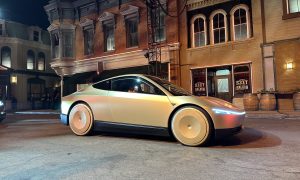
 Elon Musk2 weeks ago
Elon Musk2 weeks agoTesla reportedly suspended Cybercab and Semi parts order amid tariff war: Reuters
-
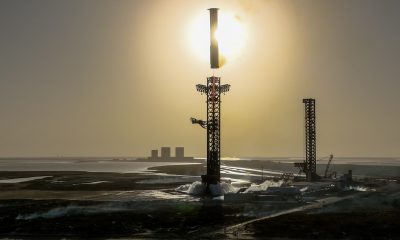
 SpaceX2 weeks ago
SpaceX2 weeks agoSpaceX pitches subscription model for Trump’s Golden Dome
-
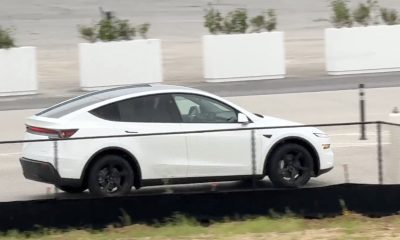
 News2 weeks ago
News2 weeks agoDriverless Teslas using FSD Unsupervised are starting to look common in Giga Texas
-
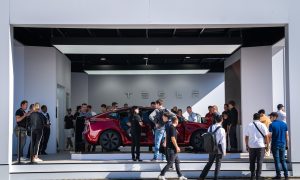
 News3 days ago
News3 days agoNY Democrats are taking aim at Tesla direct sales licenses in New York


